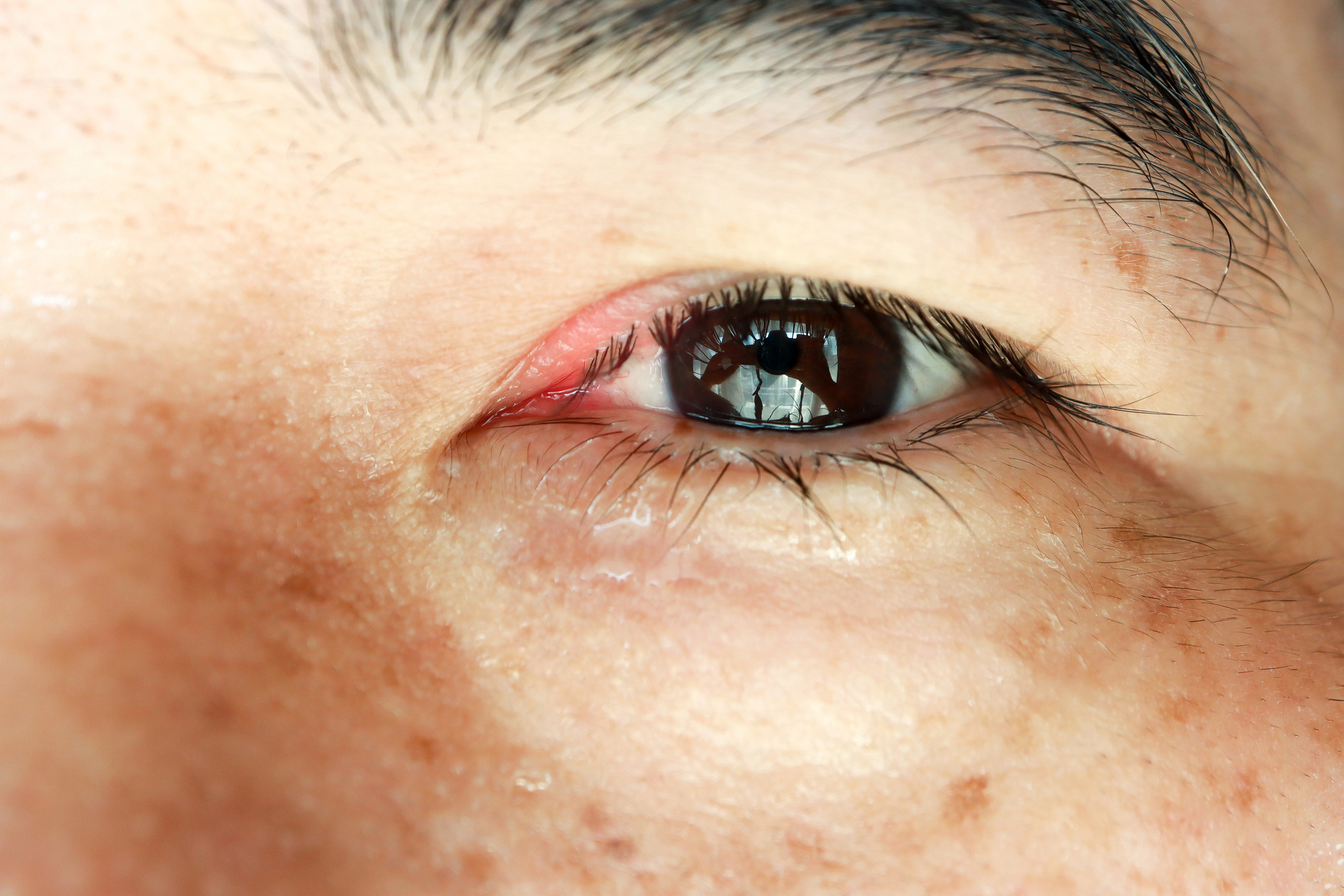Keratoconjunctivitis Sicca: Causes and Treatment
Introduction
Keratoconjunctivitis Sicca, commonly known as Dry Eye Syndrome (DES), is a prevalent ocular condition that affects millions worldwide. It occurs when there’s a chronic lack of sufficient moisture and lubrication on the surface of the eye. This comprehensive guide aims to provide a thorough understanding of DES, including its causes, symptoms, and various treatment options available to alleviate discomfort and improve ocular health.
Causes of Keratoconjunctivitis Sicca
Dry Eye Syndrome can result from various factors that disrupt the delicate balance of tear production and drainage. Some common causes include:
- Age: As individuals age, tear production typically decreases, leading to a higher prevalence of DES among older adults.
- Environmental Factors: Dry or windy climates, exposure to smoke, dust, or air conditioning can exacerbate dry eye symptoms.
- Medical Conditions: Certain systemic conditions such as diabetes, autoimmune diseases (e.g., Sjögren’s syndrome), rheumatoid arthritis, and thyroid disorders can contribute to dry eye symptoms.
- Medications: Antihistamines, decongestants, antidepressants, and hormone replacement therapy medications may decrease tear production and exacerbate dry eye symptoms.
- Lifestyle Factors: Prolonged screen time, frequent contact lens use, and inadequate blinking while focusing on digital devices can contribute to dry eye symptoms.
Symptoms of Dry Eye Syndrome
The symptoms of Keratoconjunctivitis Sicca can vary in severity and may include:
- Dryness: Persistent dryness and discomfort on the surface of the eye.
- Redness: Irritation and redness due to inflammation of the conjunctiva.
- Grittiness or Foreign Body Sensation: Feeling as if there’s a foreign object in the eye.
- Blurry Vision: Vision may become blurred, particularly during prolonged visual tasks.
- Excessive Tearing: Paradoxically, some individuals may experience reflex tearing as a response to ocular surface dryness.
Diagnosis of Keratoconjunctivitis Sicca
Diagnosing Keratoconjunctivitis Sicca typically involves a comprehensive evaluation by an eye care professional. Here’s what to expect during the diagnostic process:
- Medical History: Your doctor will begin by reviewing your medical history, including any underlying health conditions, medications, and environmental factors that may contribute to dry eye symptoms.
- Symptom Assessment: You’ll be asked about the nature and severity of your symptoms, including dryness, discomfort, redness, and visual disturbances.
- Eye Examination: Your doctor will perform a thorough examination of your eyes, including assessing the ocular surface, eyelids, and tear film. Specialized instruments may be used to evaluate tear production and quality.
- Fluorescein Staining: Fluorescein dye may be applied to the surface of your eye to assess the integrity of the tear film and identify areas of epithelial damage or dry spots.
- Schirmer’s Test: This test measures the quantity of tears produced by the eyes over a specified period. It involves placing a small strip of filter paper under the lower eyelid to absorb tears.
Additional Tests and Investigations
In some cases, additional tests or investigations may be necessary to further evaluate the underlying cause of dry eye symptoms or to rule out other ocular conditions. These may include:
- Tear Osmolarity Testing: This test measures the osmolarity, or salt concentration, of tears, which can help assess tear film stability and diagnose dry eye disease.
- Meibomian Gland Evaluation: Meibomian gland dysfunction (MGD) is a common cause of evaporative dry eye. Your doctor may evaluate the function and structure of the meibomian glands using specialized techniques such as meibography.
- Corneal Topography: This imaging technique maps the curvature and shape of the cornea, which can help identify irregularities or abnormalities that may contribute to dry eye symptoms.
- Blood Tests: In cases where underlying systemic conditions are suspected, blood tests may be ordered to evaluate for autoimmune diseases, hormonal imbalances, or other systemic factors contributing to dry eye.
Treatment Options for Dry Eye Syndrome
Management of Dry Eye Syndrome typically involves a combination of lifestyle modifications, home remedies, and medical interventions. Some common treatment options include:
- Artificial Tears: Over-the-counter lubricating eye drops can provide temporary relief by supplementing natural tear production.
- Prescription Medications: Prescription eye drops such as cyclosporine (Restasis) or lifitegrast (Xiidra) may help reduce inflammation and improve tear production.
- Warm Compresses and Lid Hygiene: Applying warm compresses and practicing lid hygiene can help alleviate symptoms and improve the quality of tears.
- Punctal Plugs: In some cases, tiny silicone plugs inserted into the tear ducts can help conserve tears by reducing drainage.
- Omega-3 Supplements: Consuming omega-3 fatty acids may help improve tear production and alleviate dry eye symptoms.
When to Consult a Doctor for Keratoconjunctivitis Sicca
Consulting a doctor is crucial if you experience persistent or worsening symptoms of Keratoconjunctivitis Sicca (Dry Eye Syndrome). Here are some signs that indicate the need for medical attention:
- Persistent Discomfort: If you frequently experience dryness, irritation, redness, or a gritty sensation in your eyes that doesn’t improve with over-the-counter lubricating eye drops, it’s time to see a doctor.
- Blurry Vision: Any changes in your vision, such as blurred vision, fluctuations, or difficulty focusing, should prompt a visit to an eye care professional.
- Discomfort While Wearing Contact Lenses: If wearing contact lenses becomes increasingly uncomfortable due to dryness or irritation, it’s essential to consult with an eye doctor to address the underlying issue.
- Eye Infections or Complications: If you develop symptoms such as eye pain, swelling, discharge, or light sensitivity, it may indicate an underlying infection or complication that requires prompt medical attention.
- Underlying Health Conditions: If you have systemic conditions such as diabetes, autoimmune diseases, or thyroid disorders, which can contribute to dry eye symptoms, it’s important to discuss these with your healthcare provider.
Conclusion
Keratoconjunctivitis Sicca, or Dry Eye Syndrome, can significantly impact an individual’s quality of life by causing discomfort and visual disturbances. However, with proper diagnosis and management, most dry eye symptoms can be effectively alleviated, allowing individuals to enjoy improved ocular comfort and clarity of vision. If you’re experiencing persistent dry eye symptoms, it’s essential to consult with an eye care professional for a comprehensive evaluation and personalized treatment plan tailored to your specific needs. By addressing the underlying causes and implementing targeted interventions, you can regain comfort and clarity in your vision, enhancing your overall well-being and quality of life.
World Eye Care Foundation’s eyecare.live brings you the latest information from various industry sources and experts in eye health and vision care. Please consult with your eye care provider for more general information and specific eye conditions. We do not provide any medical advice, suggestions or recommendations in any health conditions.
Commonly Asked Questions
Yes, allergies can exacerbate dry eye symptoms by triggering inflammation and increasing tear evaporation.
Dry Eye Syndrome is more prevalent in women, especially after menopause, due to hormonal changes.
Yes, prolonged contact lens wear can contribute to dry eye symptoms by disrupting tear film stability and oxygen flow to the cornea.
Consuming foods rich in omega-3 fatty acids, such as salmon and flaxseeds, may help improve tear quality and reduce dry eye symptoms.
Yes, medications such as antihistamines, antidepressants, and hormone therapy can decrease tear production and exacerbate dry eye symptoms.
Yes, practices such as using humidifiers, practicing the 20-20-20 rule (taking breaks every 20 minutes to look at something 20 feet away for 20 seconds), and avoiding prolonged screen time can help alleviate dry eye symptoms.
Temporary dry eye symptoms are common after LASIK surgery, but they typically improve within a few months as the eyes heal. However, in some cases, dry eye symptoms may persist or worsen.
While there are no specific eye exercises to cure dry eye, blinking exercises and gentle eyelid massages can help distribute tears more evenly and improve tear film stability.
Yes, Dry Eye Syndrome is often associated with conditions such as blepharitis (eyelid inflammation), meibomian gland dysfunction, and ocular surface diseases.
Yes, stress can contribute to dry eye symptoms by disrupting tear production and exacerbating inflammation in the ocular surface.
news via inbox
Subscribe here to get latest updates !








